
A few months ago I wrote a blog on the perils of overstretching that seemed to strike a chord with many of my students and readers. But for every overstretched yogi or yogini out there, there are four times as many folks who are bound up and moving like the tin man! Most folks I meet want to know how they can become more flexible, not less flexible. So I dedicate this blog to all of you who wish to become more supple and mobile. Let the bending begin!
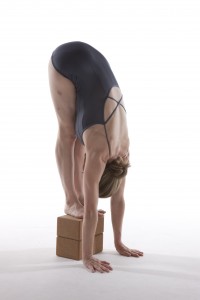
Phase 1: Your muscles are tight. Tight-person anatomy lesson 101.
Do any of these describe you?
- You recognize that you cannot stretch as far as you did when you were playing high school sports.
- You attend a yoga class with your niece and are sore for days in lots of “weird” places.
- Stretching hurts. It really hurts.
To understand what causes all that misery and tension, we have to understand a little basic muscle physiology. Take a breath; this can get a little “heady.”
1. Muscles are designed to contract. Yes, they actually love contracting, and they resist being told to lengthen. Your muscle cells (also called fibers) contain a special stretch receptor that receives signals from your nervous system via a motor neuron. When this signal is “ON” it tells those fibers to shorten. The fibers do what they’re told and remain in a shortened state unless that signal is turned “OFF.” There are many motor neurons assigned to each and every muscle in your body. Your brain decides how many neurons to assign to a task. Much of the time only some of the fibers within a muscle will contract because you may not need as many contracting muscle cells to lift a feather as you would a kettlebell.
But sometimes, our nervous system tells certain parts of your muscles to stay stiff and contracted. This is “unconscious tension,” and regular stretching is one of the best ways to help calm down that unconscious firing.
2. Muscles lengthen too, but not on their own! So when your brain tells the motor neurons to turn off, the muscle can stop contracting and be easily pulled into a stretch by two major assistive forces: 1) the position of the body and 2) the lengthening of the surrounding muscles coupled with the seeping of the connective tissues that permit the muscle to physically elongate and lengthen. Have I lost you yet? Take a deep breath, re-read and read on.
3. Muscles are surrounded and penetrated by fascia. Our muscle fibers and tissues are surrounded by a living cobweb-like blanket called fascia. Fascia is loaded with collagen and elastin fibers that are enrobed in liquids. This fascia is not an inert tissue — it responds and gives signals to the nervous system, and also assists (or restricts) movement of the muscles that it encases. When a muscle remains shortened, these fascias also shorten and can actually lose their liquids and become dehydrated and brittle and less able to “seep” and elongate.
4. What do we feel when we feel a stretch? So when you are stretching a tight muscle, you are actually feeling two main things. 1) you may be feeling the muscle’s natural resistance to being pried open, which is the stretch receptors within the muscle attempting to remain contracted (can someone please turn off my motor neuron!). 2) You are feeling the shortened and dehydrated fascias also lengthening and releasing a bit of heat.
Phase 2: You need to stretch more. Seriously, you need to stretch more.
Sorry to spoil the fun, but flexibility is a “use it or lose it” type of thing. When you don’t stretch, you keep your muscles in a chronically shortened state. Your muscles and fascias adapt to the way you use them, and over time, these soft tissues will start affecting the alignment of your joints. When those joints start wearing out because of inefficient movement patterns, you can develop osteoarthritis, bone spurs and other painful inflammatory responses and injuries. All because you didn’t stretch enough to improve and maintain flexibility.
Stretching isn’t just for athletes, or ballerinas, or yogis. Sitting at your desk, gardening, filing papers — these activities all involve repetitive actions that over-work some muscles while under-working others. Those over-worked muscles will benefit from stretching as they will be restored to a more functional length.
Check out our solutions for Tight hamstrings or IT Bands.
Read our “Stretch anytime, anywhere.” article.
[Reprinted with permission from Gaiam Life.]



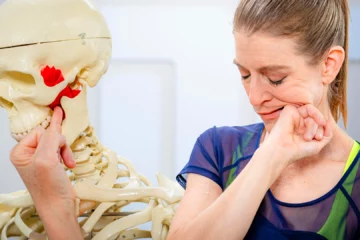
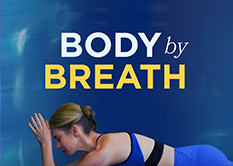



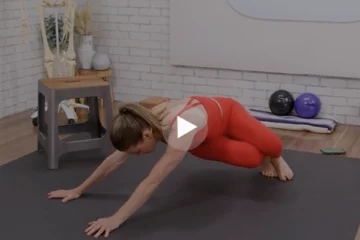
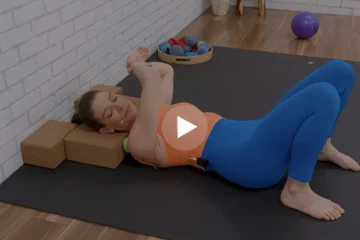


Neural play behind stretching scene is fascinating. Loved the article – short and informative.
Thanks for the informative post! I love the way you differentiate between the muscular and the fascial components of flexibility. I have found a significant difference in my body’s experience with stretching since adding the Yoga Tune Up therapy balls to my routine. I was always aware that my muscles were tight and my fascia as well but to date had not found an effective tool or technique to target both these areas. Yoga Tune Up therapy balls have been very beneficial in helping me to work to increase the mobility in these tissues and thus work toward repairing the imbalances in my body. Thanks!
I had never heard of facia before today and it’s quite fascinating to read about these this connective tissue that surrounds all of our muscle fibers. It’s no wonder why it’s a journey to see results from stretching or a yoga practice. We have a lot of cobwebs that we need to hydrate and loosen before we can make significant change to lengthen our muscles. I had always associated hydration with water intake, but it was so interesting to learn how movement is the muscles “water” or hydration. A teacher of mine always said that you have to strengthen your muscles in order to stretch them. I have heard in yoga class teachers say that in order to stretch we need to strength. How does this apply to muscles and the quality of a stretch?
I found it interesting during our Level 1 YTU Teacher Training that you can stretch a muscle for too long (like in Yin where it is all about holding a stretch anywhere from 2-10 minutes) I don’t know but I’m wondering if it has something to do with motor neurons and stretch receptors being pushed too far so then they no longer protect our muscles?
Super helpful information. I had no idea our muscles we’re so intelligent 🙂
This is very interesting. I am very tight when I stretch doing the Prasarita Padottanasana and maybe I just need to try a little harder.
Great article. I have always considered that I was not very flexible and rarely stretched in athletic training for marathons, etc. Since starting yoga and stretching consistently I can finally get my hands to touch my feet in Dandasana. Thanks.
This makes a lot of sense to me, however how long do you have to stretch to begin to see “increased flexibility”? This is a question my students ask me and my answer has always been that it all depends on their body. However, if they have a regular practice and continue to experiences posts that are very challenging for them b/c of lack of flexibility when can they expect to start to experience more flexibility?
I have very tight hamstrings too. I have never thought before that fascia had such a big role in stretching them. I like feeling of resistance and lengthening and that it is not at all something you can fix in a rapid way. It makes you more patient and calm. Nevertheless, it is so important to be reminded that you should stretch yourself frequently.
I have very tight hamstrings, especially in the morning. When I started doing yoga 10 years ago I couldn´t touch my feet. Now I put my fingertips down in a morning practice and all my fingers in an eveningpractice. So with that slow progress in mind I hope to be able to put my whole hand down in another 10. In this fast flowing society with tight deadlines and so many quick-fix, I really enjoy the long perspectives of yoga…
Thank you for this post. I am flexible. Sometimes OVERLY flexible, creeping into hyper-mobility – I work hard at neutralizing this bend-y-ness by strengthening my surrounding muscle, and overall becoming stronger (as in more grounded, earthbound, solid if you will). Interestingly enough, I used to go into a split, unbeknownst to me, hanumanasana – many many years ago (though). Also, just 3 – 5 years ago, I was able to do a wide-legged forward fold – simply and smoothly, whole upper body folded neatly onto the floor. But no longer! As I’ve been strengthening my body, through yoga, it seems that I have also been losing some flexibility in parts of my body. So I am happy to know, that with a little more love and care and attention, my hanuman will be happier
Thank you, I didn’t realize that the fibers have been left in a contracted state and I need to work consciously to get them unstuck (fuzz) and into the off position
I totally relate to the post and all the other comments that have been submitted – I feel like I’m reading about myself. Flexibility seems like it’s always evaded me. Even though at age 59 my mom can still reach the floor in an effortless forward fold, I’ve had to work on it and it’s taken over a year and a half to get to the point where I can hold onto my feet in any of the seated forward bends (like Janu Sirsasana). But I did eventually get there! I feel so much better knowing that I’m not alone in my tightness and that with continued practice I will be able to nurture greater flexibility. Thanks for normalizing my situation!
I am a chronic sufferer of tight muscles. After Gills speech about the fascia fuzz, I am paranoid about having too many cobwebs throughout my body. I wake up and try to imitate Michael Phelps by flailing my arms about. I am also learning how quickly muscles can get tight. I can take a great yoga class and feel pretty bendy, and then have to sit in a lecture for three hours and my hips feel stuck in place. I feel like when my muscles get super tight I need just as much time dedicated to counter it, comparable stretching just to get back to my (still not-flexible) baseline. This post gives me hope that with enough dedication to lengthening my muscles, and cleaning up the cobwebs, my body may look and feel more fluid and free. I’m glad you broke the harsh news that even if my desired flexibility is achieved, the work isn’t over. It’s a lifelong battle.
This post is going directly to my husband. We are a inversely exponential when it comes to yoga. For as much as I love it, he hate it. For as flexible as I am, he is equally tight. We’ve had the stretching conversation many, many times over the course of our relationship, but what finally helped me gain some ground was explaining why tightness isn’t as innocent as it seems. Consider a reasonably active, physically fit man in his early thirties with moderately tight hamstrings. He’s fit, has young, oxygen rich cells and his muscles are quick to respond to changes in activity. But as the years go by, unless he maintains the same relative level of activity, his muscles will weaken and the tension provided by assisting muscles of the hamstrings can lessen. Without that natural tension, the hamstrings can get tighter. Then what do we have? The beginning of limited mobility. (I told him to imagine those shuffling old men with hunched shoulders.) The point was to give context for understanding the importance of building flexibility and continuing to stretch throughout your life. It wasn’t a revelation, but he makes at least one attempt per day to reach his toes… It’s a start…
I really like the descriptions of muscle mass and how they can atrophy with use. I like to think that as we go through life we can re-capture some of the flexibility in our bodies, melting down the metal in our muscles that have hardened over time. I will definitely follow up on these posts. Thank you, Jill.
When Jill talks about the “tight person anatomy”, she’s talking about me! If I could achieve what she does in this forward fold atop two blocks as pictured here… Well let’s just say, that’s my Mt. Everest. First off, I’m tall (I’m sure it’s bogus logic – but I tend to think it means I have farther to go). Second, I’m hyper-extended in my knees. I’ve never been a forward fold goddess. And believe me, I’ve tried. I was a dancer for most of my life. If my hamstring fascia could talk, it would say “we’re not budging. Go back to pigeon where you belong.” Hope is not lost and I know that diligent practice is required if I ever want to scale that mountain. At the very least, it’s good to be reminded that my function is normal – though I’m sure my super-contracted ways are helped by all those gorgeous heels in my closet. I guess it’s time to give my motor neurons a pep talk.
I’m lucky to work for a very large company that has the resources to hire an ergonomics expert. Recently I took a class that went through some things that I thought were very basic – how to sit properly in a chair, for example. One of the things the class covered were some stretches that could be done at a desk and would relieve that “unconscious tension” you mentioned at the beginning of your article.
The idea that hydrating your muscles is just as important as stretching them is something I hadn’t realized before. Everyone says to “stay hydrated,” or “drink plenty of water during the day!” but they often leave out the reason why its so important. “…feeling the shortened and dehydrated fascias also lengthening and releasing a bit of heat,” when stretching is a good reminder, for me at least, why it’s important to keep a bottle of water at your desk.
Thanks for visiting Dr. Vanderhoof. Our goal is to educate the public to help professionals like yourself have an easier time communicating with clients! Thanks for the work you do too!
I think this is a great way to explain M. length without all the “golgi tendon type I or II” etc. etc. Great for the general public. Education is everything.
Stretching is the fountain of youth and what allows us to stay active; without it, there will most definitely be injury. I can’t imagine having injury from being “over-stretched”
This is a clear and concise summary about muscle physiology that I will refer to again! It really helps to be able to clearly explain to students the mechanics of stretching so that they don’t force themselves into injuries. It’s also a great reminder that consistency is key in maintaining suppleness and balance in the body.
Our muscles being in a chronic state of contraction was very enlightening for me. I have always heard flexibility is a “use it or lose it”, but know I finally learned this is due to our muscle fiber stretch receptors are turned ON all the time and the body adapts to the shortened state. Stretching consistently is a must for maintaining good health, I’m even more grateful for having a yoga practice now!
The power of the muscles, it was great to read and understand how the muscles response to stretch and way we need to stretch. I”ve seen the pain of what unstretched muscles can do as well as over stretched muscles. Like everything in the universe the body will seek a balance. I love knowing we can support the balance of the universe within our own bodies by listening to what our muscles tell us. So let’s all stretch with love and celebrate our muscles and how they work for us.
No more fuzz, no more fuzz, thats all I can think about every morning now. No more fuzz, stretch the fuzz away. I now fully understand why it is so improtant to strecth. Besides after a good stretch I feel emotionally better. Keep the fuzz out.
I have horribly tight hamstrings – when I started yoga a few years ago, I couldn’t get my hands down past mid-shin. I slowly (very slowly!) began to make progress and was eventually able to get my hands almost flat on the floor. Yay for me! Then, in December of last year, I had foot surgery which put me out of yoga-commision for a little over six months. In those six months, my hamstrings reverted back to their short and tight state. I have been working on stretching and lengthening since I returned and am slowly making progress. Just goes to show that continuous stretching can go a long way, even if you don’t realize it is happening in the process.
Thanks. I will try this technique, since full forward fold is my weak point when coming to “flow” forward. Hopefully this will help. 🙂
for a while, points along my lumbar spine would crack if i moved my leg across my body in a somewhat dynamic leg stretch #3; i began rolling out the thoracolumbar lumbar fascia and i dont crack as much!! amazing how much ‘fuzz’ is in our fascia!
[…] Flexibility, stretching, stretching exercises [See previous entries on Jill's stretching series here and […]
So Jill, if we drink more water will our fascia ‘seep’ a little more easily? I like the information you gave about tight muscles and the reason why they may be tight, but how might a very stiff person go about stretching safely?
How great to read this today. I even used the ‘use it or lose it’ analogy with my students today and now I read this. woohoo. I’m a tune up toddler for sure!
Kinda reminds me of what a Physics graduate student said about the universe constantly expanding and contracting. We’re made of all the stuff of the universe and when it comes to muscles, naturally contracting. I like how YogaTuneUp is taking me into those far reaches of space in my body that have contracted and contracted and contracted. This yoga teacher training is allowing those spaces to stretch and expand again. Way cool. Can the universe overstretch? 🙂
It’s remarkable how the nature of muscle is to contract and that lengthening requires stretching. The tendency for muscles to shorten when not exercised might help explain how my sister who was once taller than me is now noticeably shorter. Perhaps my yoga practice is also helping me retain my height as I get older too.
“the lengthening of the surrounding muscles coupled with the seeping of the connective tissues that permit the muscle to physically elongate and lengthen.”
I think I need a little more explanation of the connective tissue seeping part…
I understand seeping as a slow release of fluid and imagine it to be a viscous type fluid.
Years ago I had a horse clamp down on my thigh and have a lingering hematoma as a souvenir. I’m sure the bite crushed muscle and connective tissue and left scarring behind. It surprises me how painful the area can be today over 20yrs. later– given the intensity of sensation when I tried rolling that area on the YTU balls, I wonder if this technique could be harmful? I also wonder if there have been any successes with the balls or foam rolling with reducing such an aged injury.
I spend a lot of time sitting – at the computer, reading books and, lately, driving a car in ridiculous traffic conditions. Rather than sitting in a position recommended by my firm’s ergonomics expert, I tend to shift into different configurations depending on when I notice that a limb or part of my rear has gone numb. I perch and stack my chin on a bent knee, sit on one bent leg, cross one knee over the other, etc. It’s not pretty when I’m forced to stand because my bladder needs urgent attention. All the passive stretching that I’ve done – sitting in positions no Yoga teacher would allow – also contribute to contraction and a sort of deadening of sensation in the muscles and tendons that are the victims of my bad posture. Which is why I love a comprehensive and therapeutic yoga routine, particularly the way YTU is taught. Jill and Tiffany and the other great YTU instructors make me think about the consequences of what my body does and how to heal and strengthen through better treatment of my muscles, joints and bones.
I agree Jill, with you that stretching is so vital for our bodies.
Tight muscles will ultimately bring our bodies out of alignment and cause problems in our joints.
I recently went to the chiropractor, who does ART for some knee pain and he said the cause of this knee pain was probably due to tight IT band (he suggested rolling it) and also weak adductor muscles. So it’s important to keep our bodies stretched in different ways!
Thanks Jill,
It’s such a great reminder to take care of our fascia through YTU balls and foam rollers. Before learning about rolling I had to see a Chiropractor three times a week for almost six months. YTU is such a relief from pain and much more affordable 🙂 It is awesome to live pain free & show others how they can also.
I love Gil Hedley’s the Fuzz Speech video that demonstrates so well the importance of fluffy buns vs buns of steal. Working in the fitness industry allows many opportunities to see the negligence of stretching.
[…] Yoga Tune Up® Blog « Loosen Up! How to Stretch Your Way to Flexibility […]